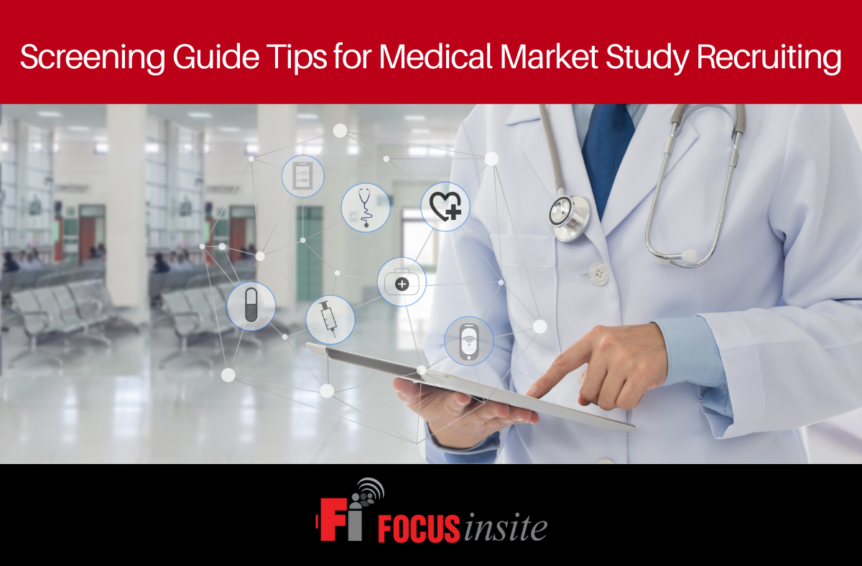We recently posted a blog about focus group screening guides, which is a great primer for recruiting for general studies. Today, we’re going to talk about maximizing screening guides for niche studies, such as for medical or healthcare studies. As a leader in medical market research recruitment, our team has lots of experience about making the most from a medical study screening guide.
As with any niche study, there are additional challenges that the moderator and recruiter must consider. Recruiting for medical studies can be a slower and more frustrating project than recruiting for general studies. Fortunately for our clients, we have a dedicated medical study recruiting team led by Serenity Bohon, and below are some tips from her team about getting the most from a medical screening guide.
Prioritize Candidate Criteria
Every market research study requires a particular type of participant. Often you’ll use demographic and psychographic qualifications to find ideal participants. On paper it’s easy to create a list of what makes an ideal study candidate. When it comes to medical or technical studies, the ideal candidate may not exist, or maybe not in the number you need to fill a study.
You can prepare for potential recruitment issues by prioritizing your qualifying candidate criteria. First, determine what are your ‘must-have’ qualifications, followed by ‘nice-to-have’ qualifications. For example, if your study is wanting to assess burnout among medical practitioners, ask yourself if the number of days a medical practitioner works is more important that the number of patients seen. More people may qualify for your study based on how you prioritize your criteria.
Short and Concise
Don’t make a screening guide too long or tedious to fill out. This rule applies to any market research study, but especially for medical professionals! Before getting to far along writing a screening guide for a medical or healthcare study, it’s a good idea to consult with your recruiter to identify ways to make your screening guide more concise.
Prioritizing your criteria, as mentioned above, will help you shorten your guide without losing critical qualifying requirements.
You don’t want to limit your options by sending out a long screener. Most busy professionals are likely to avoid filling out a detailed and long screening guide. Remember, you want to start with a bigger pool of potential candidates and then whittle it down, which brings us to the next tip below.
Double Screen
Keep your first screener on the more general and short side, and then add subsequent qualifying questions in your second round of screening. Double screening is a proven way to end up with a pool of qualified candidates who are excited to participate in the study.
Work with an Experienced Recruiting Agency
Recruiting for medical or hard-to-fill studies is best left to experienced recruiters. While it’s possible to recruit on your own, you’ll likely spend a lot more time and energy than you anticipate. Our medical recruiting team has built up their professional networks over many years, and they leverage their contacts withing the medical and healthcare communities to recruit for studies.
The success of any market research study starts with a well-written and concise screening guide. Finding the right people for your project is what our recruiters are known for.
Contact Us Today if You’re Looking to Recruit for a Medical or Healthcare Study.


